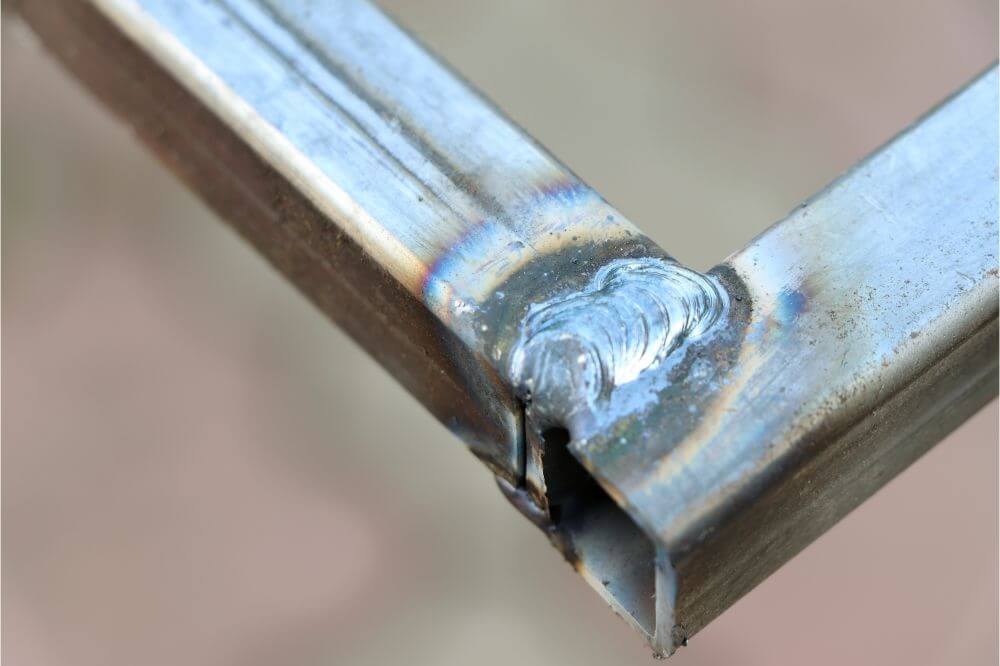A soldering iron works by heating a heat-resistant element that transfers heat to the tip to melt the solder and the soldering process. Your soldering iron may become defective and stop heating to the right temperatures or stop heating altogether.
Both issues may require you to replace the heating element and return your soldering iron to functionality. Below are the steps to apply during the repair.
Test Your Soldering Iron
The first step to repairing your soldering iron is establishing whether the heating element is indeed spoilt. Below are the steps to determine the problem:
- Connect your soldering iron correctly to the receptacle to observe the readings.
- The heating element connects to pins 1 and 2 of your soldering iron receptacle.
- When normally functioning, the resistance of a heating element should read between 19ohms and 23Ohms. Anything beyond that means that your heating element is not functional.
- If the resistance measures correct, the temperature sensor could be the faulty one and should be measured.
- Connect your soldering iron to pins 4 and 5 in the receptacle and observe if it measures between 1.2ohms to 1.5 ohms, which are the correct measurements. Any other numbers other than the standard ones means your heating element needs changing.
Disassembling the iron
After establishing that your heating element needs changing, you will need a few simple tools to disassemble your soldering iron.
They include:
- Wire cutters,
- Needle-nose pliers,
- A screwdriver set,
- A spanner wrench
- Unplug your soldering iron from the central unit and begin by unscrewing the protective nut on the handle to separate the soldering iron from the insulator handle.
- The next step is to remove the tape wound on the assembly of the soldering iron carefully and keep it safely for use later during the reassembly.
- Remove the soldering tip and tip lock by pulling the two forward from the handle.
- Use your set of tools on the remaining nuts on the handle anticlockwise, exposing the heating element and its connections on the PCB board. After exposing the heating element connection on the PCB, ensure you note where the different wires sit.
Consider taking a few pictures before unsoldering the wires to refer to when reconnecting the new heating element. Go ahead and de-solder the wires from the PCB and, using your needle-nose pliers, clamp the faulty heating element from within the end of your soldering iron and trash it.
Soldering the new heating element
The new heating element may now be attached to the PCB after the disassembling process, and the first step is to pick and position the new heating element onto the exact position the faulty one was.
You can refer to the pictures you took earlier to ensure you attach it to the PCB’s correct place.

How to solder
Carefully take one of the two red wires on the heating element and solder it to the red wire from the PCB and the other red one to the blue wire from the PCB cord.
Note that the two red wires on the heating wires do not have a polarity requirement and can interchange without affecting your soldering iron functionality.
The next step is to connect the sensor wires
Solder the green wire from the cord on your PCB to the blue one on the heating element. The white one on the PCB chord should attach to the white wire on the heating element.
Reassembling the soldering iron
After correctly soldering the new heating element onto the PCB, align it correctly to your handle’s slots, and ensure it is well secured.
Next is to re-install your plastic retaining nut on the handle and use your set of screws to secure it back to its position.
Slide the tip holder back in, introducing the smaller end first and then insert the soldering tip. After inserting the soldering tip, slide the heat shield and secure the assembly with the nut.
Ensure you get a tight fit with the nuts but do not over tighten as your iron expands and contracts naturally during use due to the heating process involved.
If applicable to your iron, re-attach the smoke absorber line to your handle.
Retesting the iron
Having followed all the right procedures to reconnect your new heating element, you need to test and confirm it works. Ensure the resistance measures mentioned above are what you get to verify your new heating element connections.
After successfully replacing the heating element, ensure you practice essential maintenance processes by keeping your soldering iron tip dust and contaminant-free to last as long as possible.
It is important to note that a replacement handle is available at a reasonable cost if you find the process tedious.
How can you increase the soldering iron’s tip?
Since there are numerous ways to reducing the life of a soldering tip, here are some of the ways you can increase the soldering iron’s tips:
- Microprocessor controlled soldering – these types of soldering control the iron’s temperature, thus creating an average thermal temperature. The microprocessor-controlled soldering eliminates temperature spikes, which stress the heating element.
- Avoid excessive heat – if you turn off the soldering iron, you will increase its lifespan. You do not have to buy a manual soldering iron because modern irons sleep automatically, thus saving time and money.
- Check temperature when changing your solder type – unlike standard solder types, the lead-free solder needs a higher temperature to operate appropriately. Ergo, you need to ensure the solder is usually working, and everything is fine.
- Keep the tip clean – everyone knows that keeping the tip clean is one way to increase the lifespan of a soldering iron. If you are looking to get the best results, using a brass wool ball is a good idea.
However, if you are a first-timer in maintaining a soldering iron, seeking professional help is recommended. Please visit our website to learn more about our services and how you can contact us.

